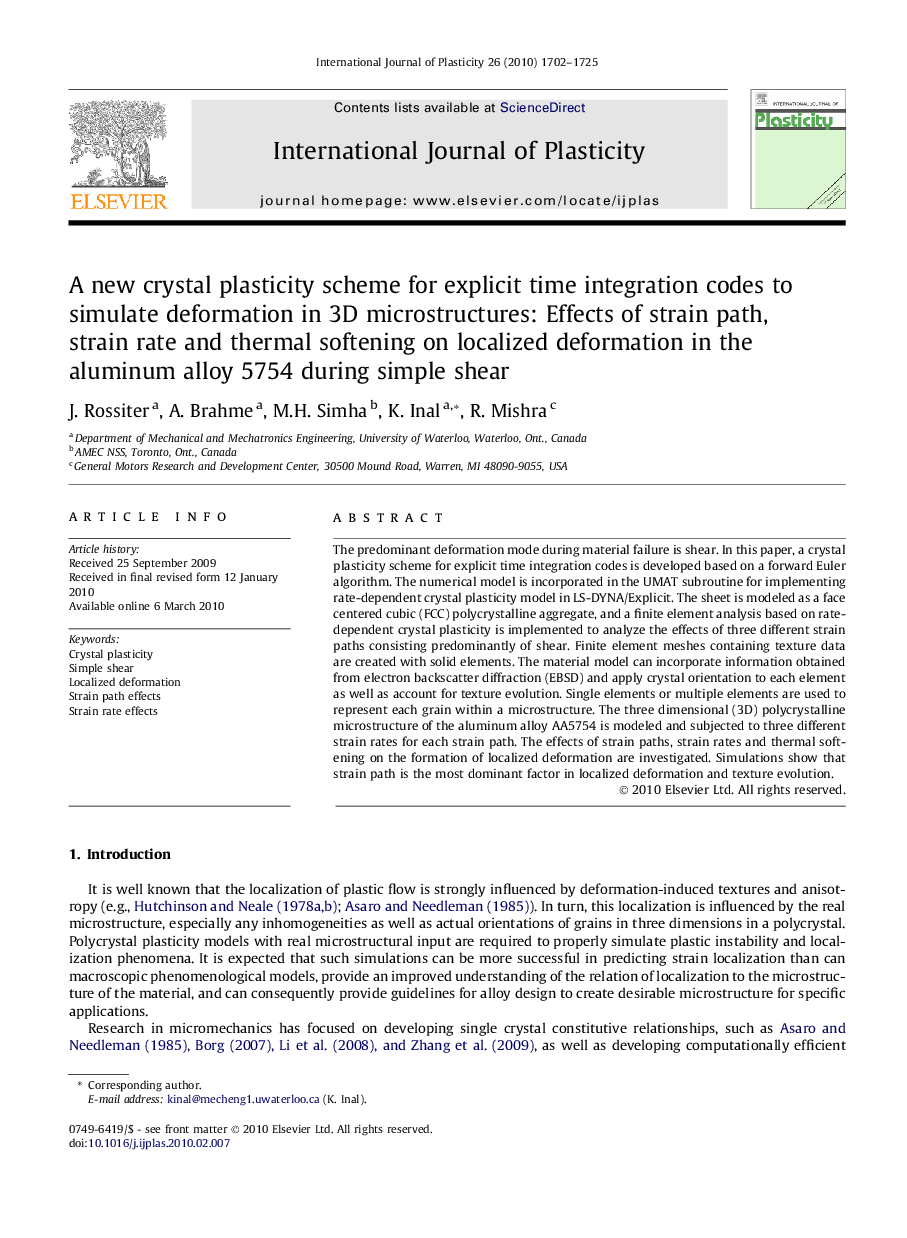| Article ID | Journal | Published Year | Pages | File Type |
|---|---|---|---|---|
| 787211 | International Journal of Plasticity | 2010 | 24 Pages |
The predominant deformation mode during material failure is shear. In this paper, a crystal plasticity scheme for explicit time integration codes is developed based on a forward Euler algorithm. The numerical model is incorporated in the UMAT subroutine for implementing rate-dependent crystal plasticity model in LS-DYNA/Explicit. The sheet is modeled as a face centered cubic (FCC) polycrystalline aggregate, and a finite element analysis based on rate-dependent crystal plasticity is implemented to analyze the effects of three different strain paths consisting predominantly of shear. Finite element meshes containing texture data are created with solid elements. The material model can incorporate information obtained from electron backscatter diffraction (EBSD) and apply crystal orientation to each element as well as account for texture evolution. Single elements or multiple elements are used to represent each grain within a microstructure. The three dimensional (3D) polycrystalline microstructure of the aluminum alloy AA5754 is modeled and subjected to three different strain rates for each strain path. The effects of strain paths, strain rates and thermal softening on the formation of localized deformation are investigated. Simulations show that strain path is the most dominant factor in localized deformation and texture evolution.
